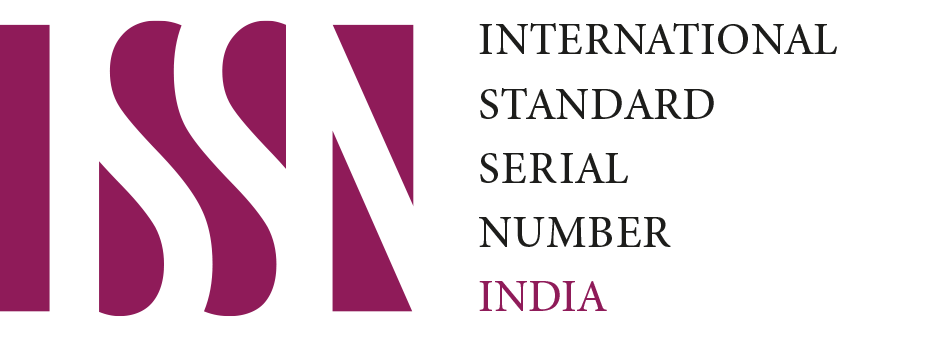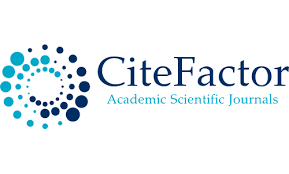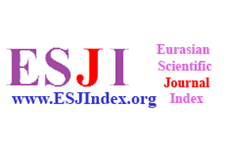Digital medical image as an object of processing and analysis
Amer Abu-Jassar
Faculty of Information Technology, Department of Computer Science Ajloun National University, Ajloun, Jordan
Diana Rudenko
Department of Informatics, Kharkiv National University of Radio Electronics, Kharkiv, Ukraine
Hitham Abdalla
General practitioner, VIP Doctors 247, Dubai, UAE
Keywords: Image, Segmentation, Analysis, Classification, Contrast, Pre-processing, Recognition, Medical Imaging
Abstract
Digital image is a special source of information. This source not only represents a certain type of information, but also visualizes it. At the same time, processing and analysis of such information allows us to obtain additional data. Then a general idea of what is being studied is formed. Digital images are of particular importance when processing medical data. This allows us to obtain data on the microcosm of the patient and his individual organs, as a rule, without surgical intervention. For these purposes, various methods and approaches for image processing are used. The choice of specific medical image research tools depends on the problem that needs to be solved and the features of the input data presentation. The paper discusses some features of solving certain problems of processing and analysis in medical imaging. The results are presented for real medical images.
References
Luo, W., Qu, Z., Pan, F., & Huang, J. (2007). A survey of passive technology for digital image forensics. Frontiers of Computer Science in China, 1, 166-179.
Lei, M., Liu, L., Shi, C., Tan, Y., Lin, Y., & Wang, W. (2021). A novel tunnel-lining crack recognition system based on digital image technology. Tunnelling and Underground Space Technology, 108, 103724.
Seeram, E., & Seeram, E. (2019). Digital image processing concepts. Digital Radiography: Physical Principles and Quality Control, 21-39.
Lyashenko, V. V., Lyubchenko, V. A., Ahmad, M. A., Khan, A., & Kobylin, O. A. (2016). The Methodology of Image Processing in the Study of the Properties of Fiber as a Reinforcing Agent in Polymer Compositions. International Journal of Advanced Research in Computer Science, 7(1), 15-18.
Kobylin, O., & Lyashenko, V. (2014). Comparison of standard image edge detection techniques and of method based on wavelet transform. International Journal, 2(8), 572-580.
Гиренко, А. В., Ляшенко, В. В., Машталир, В. П., & Путятин, Е. П. (1996). Методы корреляционного обнаружения объектов. Харьков: АО “БизнесИнформ, 112.
Lyashenko, V. V., Babker, A. M. A. A., & Kobylin, O. A. (2016). The methodology of wavelet analysis as a tool for cytology preparations image processing. Cukurova Medical Journal, 41(3), 453-463.
Lyashenko, V., Kobylin, O., & Ahmad, M. A. (2014). General methodology for implementation of image normalization procedure using its wavelet transform. International Journal of Science and Research (IJSR), 3(11), 2870-2877.
Tahseen A. J. A., & et al.. (2023). Binarization Methods in Multimedia Systems when Recognizing License Plates of Cars. International Journal of Academic Engineering Research (IJAER), 7(2), 1-9.
Al-Sharo, Y. M., Abu-Jassar, A. T., Sotnik, S., & Lyashenko, V. (2021). Neural Networks As A Tool For Pattern Recognition of Fasteners. International Journal of Engineering Trends and Technology, 69(10), 151-160.
Lyubchenko, V., & et al.. (2016). Digital image processing techniques for detection and diagnosis of fish diseases. International Journal of Advanced Research in Computer Science and Software Engineering, 6(7), 79-83
Lyashenko, V., Matarneh, R., & Kobylin, O. (2016). Contrast modification as a tool to study the structure of blood components. Journal of Environmental Science, Computer Science and Engineering & Technology, 5(3), 150-160.
Lyashenko, V. V., Matarneh, R., Kobylin, O., & Putyatin, Y. P. (2016). Contour Detection and Allocation for Cytological Images Using Wavelet Analysis Methodology. International Journal, 4(1), 85-94.
Orobinskyi, P., & et al.. (2020). Comparative Characteristics of Filtration Methods in the Processing of Medical Images. American Journal of Engineering Research, 9(4), 20-25.
Uchqun o‘g‘li, B. S., Nataliya, B., & Vyacheslav, L. (2023). Digital image of a blood smear as an object for research. Journal of Universal Science Research, 1(10), 517-525.
Boboyorov Sardor Uchqun o‘g‘li, Lyubchenko Valentin, & Lyashenko Vyacheslav. (2023). Image Processing Techniques as a Tool for the Analysis of Liver Diseases. Journal of Universal Science Research, 1(8), 223–233.
Boboyorov Sardor Uchqun o‘g‘li, Lyubchenko Valentin, & Lyashenko Vyacheslav. (2023). Pre-processing of digital images to improve the efficiency of liver fat analysis. Multidisciplinary Journal of Science and Technology, 3(1), 107–114.
Uchqun o‘g‘li, B. S., Tetiana, S., Oleksandr, Z., & Vyacheslav, L. (2023). Color-aware digital image segmentation procedure as a tool for studying fatty liver disease. Journal of Universal Science Research, 1(9), 431-441.
Uchqun o‘g‘li, B. S., Oleksii, T., Nataliya, B., & Vyacheslav, L. (2023). Contrasting as a Method of Processing Medical Images in the Study of Fatty Liver Disease. Journal of Universal Science Research, 1(9), 29-39.
Ahmad, M. A., Mustafa, S. K., Zeleniy, O., & Lyashenko, V. (2020). Wavelet coherence as a tool for markers selection in the diagnosis of kidney disease. International Journal of Emerging Trends in Engineering Research, 8(2), 378-383.
Mousavi, S.M.H.; MiriNezhad, S.Y.; Lyashenko, V. (2017). An evolutionary-based adaptive Neuro-fuzzy expert system as a family counselor before marriage with the aim of divorce rate reduction. In Proceedings of the 2nd International Conference on Research Knowledge Base in Computer Engineering and IT, Uttrakhand, India, 24–26 March 2017.
Ahmad, M. A., Lyashenko, V. V., Deineko, Z. V., Baker, J. H., & Ahmad, S. (2017). Study of Wavelet Methodology and Chaotic Behavior of Produced Particles in Different Phase Spaces of Relativistic Heavy Ion Collisions. Journal of Applied Mathematics and Physics, 5, 1130-1149.
Mousavi, S. M. H., Victorovich, L. V., Ilanloo, A., & Mirinezhad, S. Y. (2022, November). Fatty Liver Level Recognition Using Particle Swarm optimization (PSO) Image Segmentation and Analysis. In 2022 12th International Conference on Computer and Knowledge Engineering (ICCKE) (pp. 237-245). IEEE.
Puttagunta, M., & Ravi, S. (2021). Medical image analysis based on deep learning approach. Multimedia tools and applications, 80, 24365-24398.
Cai, L., Gao, J., & Zhao, D. (2020). A review of the application of deep learning in medical image classification and segmentation. Annals of translational medicine, 8(11), 713.
Chlap, P., Min, H., Vandenberg, N., Dowling, J., Holloway, L., & Haworth, A. (2021). A review of medical image data augmentation techniques for deep learning applications. Journal of Medical Imaging and Radiation Oncology, 65(5), 545-563.
He, K., & et al.. (2023). Transformers in medical image analysis. Intelligent Medicine, 3(1), 59-78.
Raj, R. J. S., Shobana, S. J., Pustokhina, I. V., Pustokhin, D. A., Gupta, D., & Shankar, K. J. I. A. (2020). Optimal feature selection-based medical image classification using deep learning model in internet of medical things. IEEE Access, 8, 58006-58017.
Guan, H., & Liu, M. (2021). Domain adaptation for medical image analysis: a survey. IEEE Transactions on Biomedical Engineering, 69(3), 1173-1185.
Mathur, N., Landman, J., Li, Y. Y., Strahm, M., Kazdaghli, S., Prakash, A., & Kerenidis, I. (2021). Medical image classification via quantum neural networks. arXiv preprint arXiv:2109.01831.
Li, Z., Zhang, X., Müller, H., & Zhang, S. (2018). Large-scale retrieval for medical image analytics: A comprehensive review. Medical image analysis, 43, 66-84.

















